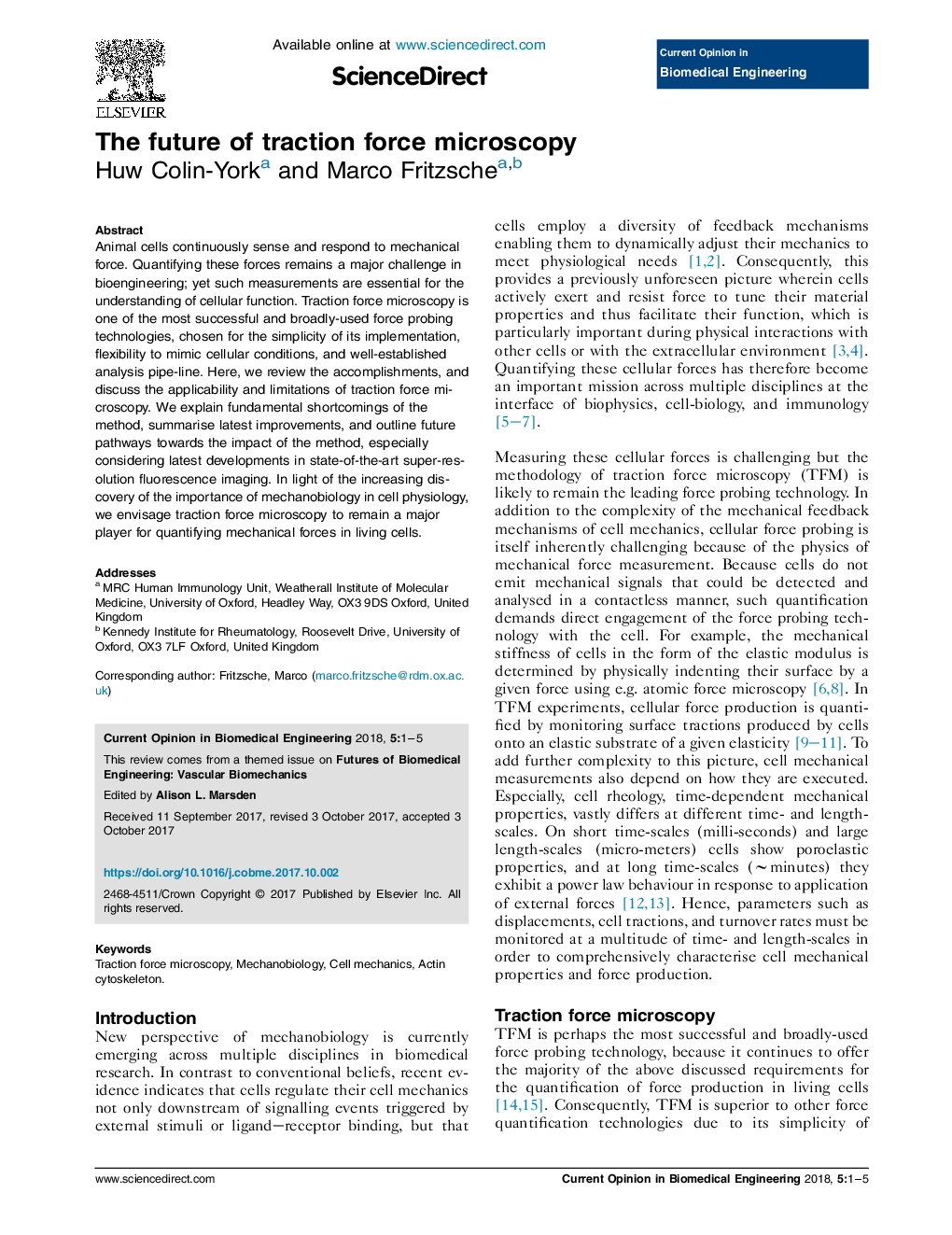| Article ID | Journal | Published Year | Pages | File Type |
|---|---|---|---|---|
| 8918974 | Current Opinion in Biomedical Engineering | 2018 | 5 Pages |
Abstract
Animal cells continuously sense and respond to mechanical force. Quantifying these forces remains a major challenge in bioengineering; yet such measurements are essential for the understanding of cellular function. Traction force microscopy is one of the most successful and broadly-used force probing technologies, chosen for the simplicity of its implementation, flexibility to mimic cellular conditions, and well-established analysis pipe-line. Here, we review the accomplishments, and discuss the applicability and limitations of traction force microscopy. We explain fundamental shortcomings of the method, summarise latest improvements, and outline future pathways towards the impact of the method, especially considering latest developments in state-of-the-art super-resolution fluorescence imaging. In light of the increasing discovery of the importance of mechanobiology in cell physiology, we envisage traction force microscopy to remain a major player for quantifying mechanical forces in living cells.
Related Topics
Physical Sciences and Engineering
Engineering
Biomedical Engineering
Authors
Huw Colin-York, Marco Fritzsche,
